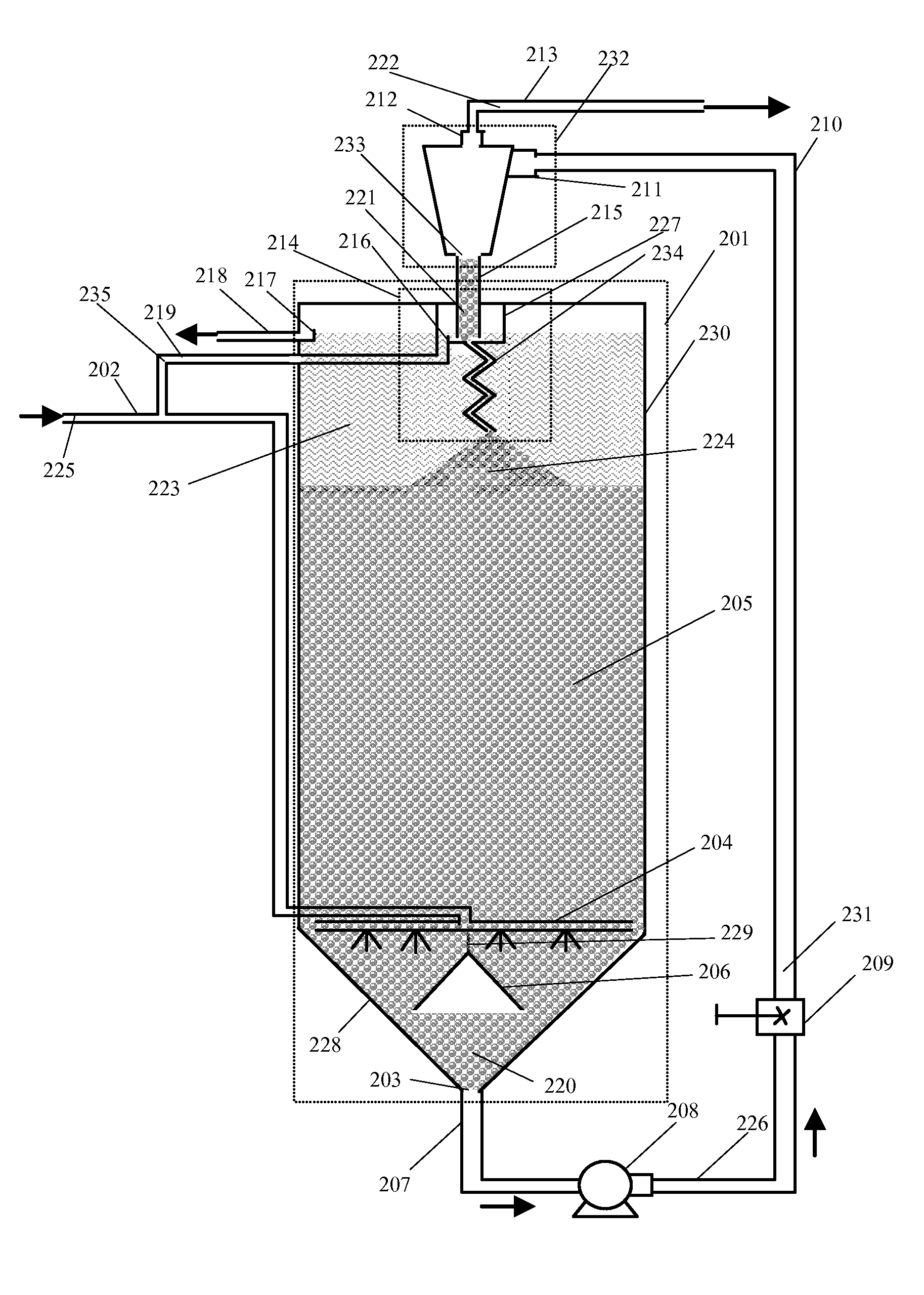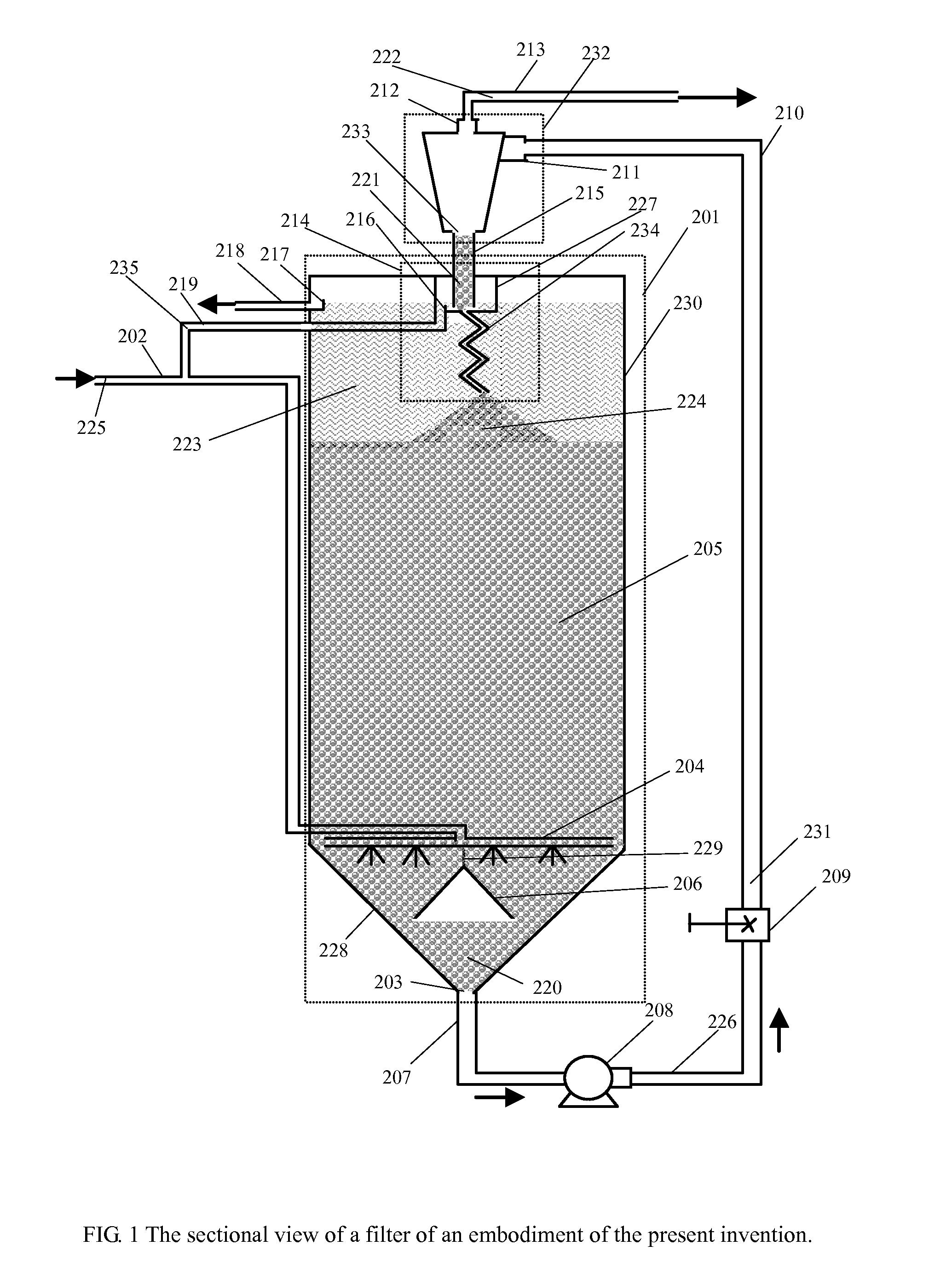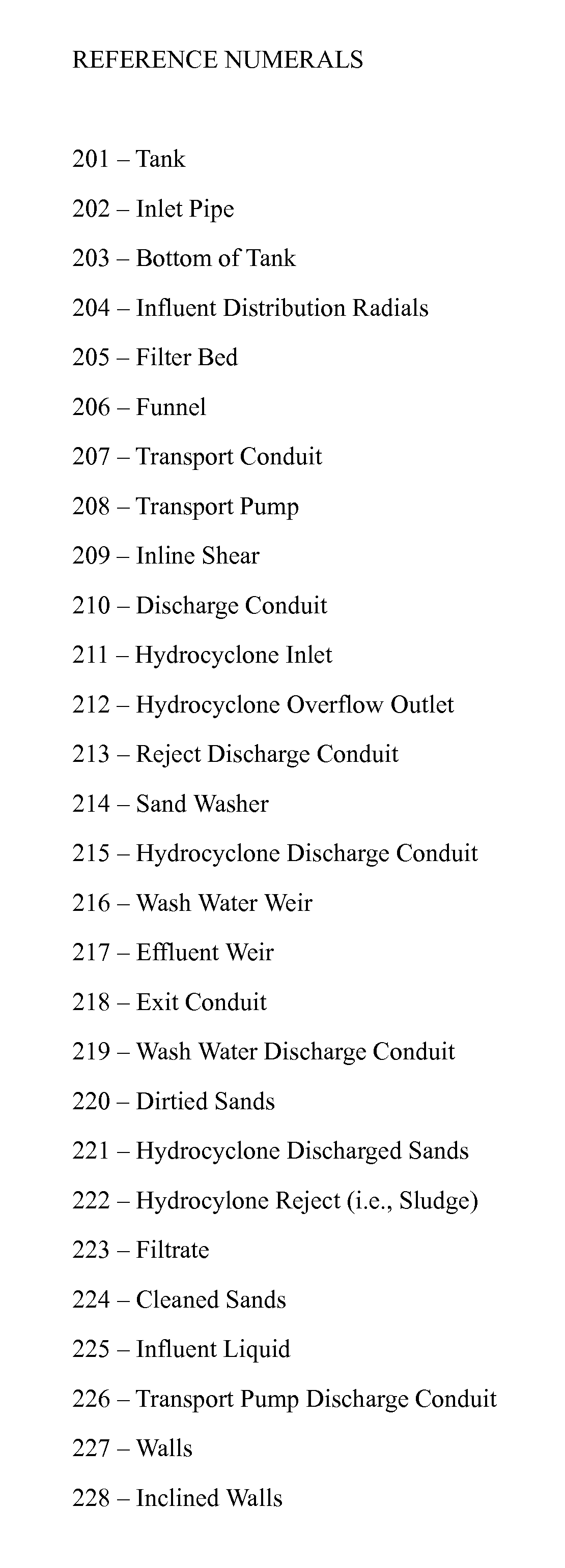Method and Apparatus for Separation of Impurities from Liquid by Upflow Granular Media Filters
a granular media filter and liquid separation technology, applied in the direction of filtration separation, moving filter element filter, separation process, etc., can solve the problems of unnecessarily increasing the cost of such a system, reducing the productivity of the system, and the inability of the filtration process to be continuous
- Summary
- Abstract
- Description
- Claims
- Application Information
AI Technical Summary
Benefits of technology
Problems solved by technology
Method used
Image
Examples
Embodiment Construction
[0018]With reference to FIG. 1, a preferred embodiment of filter apparatus of this invention is presented.
[0019]A tank 201 contains a filter bed 205 consisting of loose, granular filter media, preferably of uniform grain size. The tank 201 is defined by vertical walls 230 and conical or inclined walls 228 which form a funnel-shaped bottom. The filter media can consist of e.g. sand, sand and gravel, or any granular material having an absorptive surface structure (sand is used as the filter media as illustrative purpose here). Liquid 225, which can be water or any other liquids need to be filtered, enters through an inlet pipe 202. The inlet pipe 202 connects to a series of distribution radials (the radial rack) 204 which introduces the liquid 225 into the filter bed 205. The radial rack 204 is located concentrically at the vertical base of the filter bed and it ensures the liquid 225 is equally distributed within the filter bed 205. A funnel 206 is placed upside down and is connected...
PUM
 Login to View More
Login to View More Abstract
Description
Claims
Application Information
 Login to View More
Login to View More - R&D
- Intellectual Property
- Life Sciences
- Materials
- Tech Scout
- Unparalleled Data Quality
- Higher Quality Content
- 60% Fewer Hallucinations
Browse by: Latest US Patents, China's latest patents, Technical Efficacy Thesaurus, Application Domain, Technology Topic, Popular Technical Reports.
© 2025 PatSnap. All rights reserved.Legal|Privacy policy|Modern Slavery Act Transparency Statement|Sitemap|About US| Contact US: help@patsnap.com



